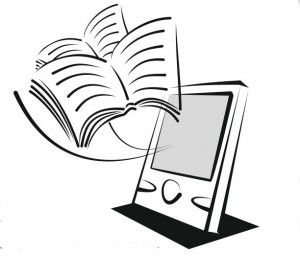Over the years, there has been much debate on the appropriate format that eBooks should have. The eBook format a buyer of eBooks chooses will often depend on the reading device that buyer has, on whether he/she wishes to have the purchase synced to more than one device and the buyer’s preferred vendor of eBooks.
From a publisher’s standpoint, however, the issue becomes much trickier. A publisher has to cater to more than one buyer and therefore cannot predict the reasons for a buyer’s purchase. The publisher has to therefore prepare for every eventuality and this can often lead to many costly iterations and time and budget overruns. In case of books that have some peculiarities, like images that cannot be allowed to flow as might be the case for a book of poetry, the fixed-layout format is often the most preferred format but its performance across multiple devices (eReaders) cannot be predicted. Similarly, certain fonts render perfectly on one eReader and won’t render accurately, sometimes won’t even show, on others. In the case of Indic fonts, this lapse is a significant one.
eBooks can be read only on what are called eReaders or computers with software that allow eBooks to be displayed. Many such eReaders haven’t kept pace with advances in technology. Similarly, the technologies that are most often proposed for eBook development – EPUB and MOBI – don’t quite help eBooks realize the potential like other technologies do. Other technlogies like HTML, for example.
HTML is the technology around which most websites are built. eBooks built on a pure HTML-based platform would, therefore, be able to do everything websites can do and can emulate the slick “look and feel” that many such websites possess. And because it is possible to view eBooks built on an HTML-based platform on the ever-faithful, ubiquitous web browser, the need for special software to view an eBook, whether on mobile devices or on your personal computer, is avoided.
The pundits have all backed HTML as the technology that can truly deliver the potential of eBooks to reach out to readers and make reading a more interesting experience. Its power to integrate technologies such as audio and video seamlessly creates endless possibilities for the “book”. After our experiences with eBooks where recreating the same user experience across multiple platforms became an ever-enduring challenge, we decided to experiment with a pure-HTML eBook (with CSS and some Javscript). The result was this.
We experimented with a simple eBook we downloaded from the Gutenberg portal. We coded it a little to make navigation easier and realised that with a little more time and effort, an amazingly responsive experience can be created – one that can incorporate various media should the book warrant such inclusion. For text-based books and books with a few images, it is definitely the right choice – both in terms of the effort involved and the consistency of the user experience across all eReaders. The benefit of not having to use specialised software to read the eBook is also a significant one that should not be easily dismissed.
It is also easy to see why an eBook such as this, that is purely based on HTML, is shunned. It does not easily incorporate any restrictive measures, commonly called DRM. For those who wish to do that, this might not exactly be good news. But for the likes of us, who will trust buyers to do the right thing, this certainly seems the way to go.
This post was a great combination of in-depth knowledge and clear, engaging writing.